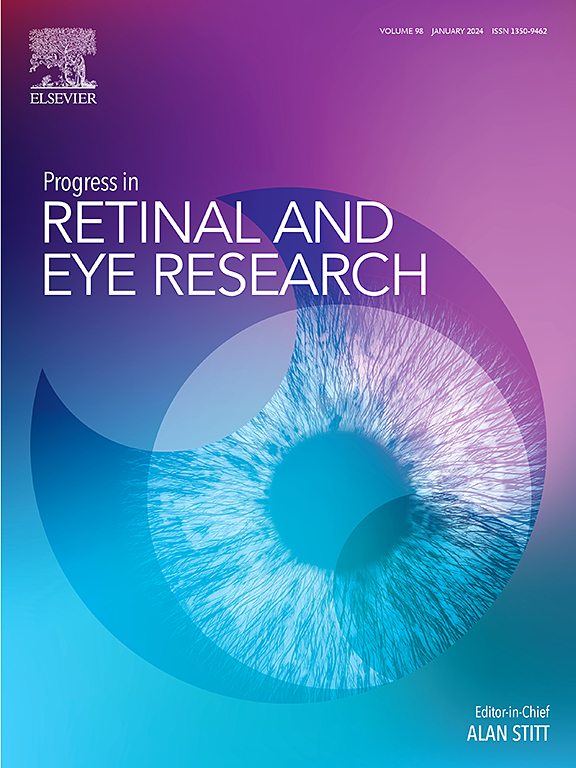The role of CFTR in the eye, and the effect of early highly effective modulator treatment for cystic fibrosis on eye health
IF 14.7
1区 医学
Q1 OPHTHALMOLOGY
引用次数: 0
Abstract
Cystic fibrosis transmembrane conductance regulator (CFTR) is a protein that plays a crucial role in various human organs, including the respiratory and digestive systems. Dysfunctional CFTR is the key variant of the lethal genetic disorder, cystic fibrosis (CF). In the past decade, highly effective CFTR modulator therapies, including elexacaftor-tezacaftor-ivacaftor, have revolutionised CF management by correcting the underlying molecular defect to improve patient outcomes and life expectancy. Despite demonstrating multiorgan efficacy, clinical studies have largely overlooked the potential for ocular disturbances with CFTR modulator therapy, with the exception of a few case studies reporting the presence of crystalline lens pathologies in young children on CFTR modulators, and in breastfed infants born to individuals who were on CFTR modulator treatment during pregnancy. CFTR is present in multiple tissues during embryonic development, including the eye, and its expression can be influenced by genetic and environmental factors. This review summarises the role of CFTR in the eye, and the potential impact of CFTR on eye function and vision later in life. This information provides a framework for understanding the use and possible effects of CFTR-modulating therapeutics in the context of eye health, including the potential to leverage the eye for non-invasive and accessible diagnostic and monitoring capabilities in patients with CF.
CFTR 在眼睛中的作用,以及早期高效调节剂治疗囊性纤维化对眼睛健康的影响。
囊性纤维化跨膜传导调节因子(CFTR)是一种蛋白质,在呼吸系统和消化系统等多个人体器官中发挥着至关重要的作用。CFTR 功能失调是致命性遗传疾病囊性纤维化(CF)的关键变体。在过去十年中,包括 elexacaftor-tezacaftor-ivacaftor 在内的高效 CFTR 调节器疗法通过纠正潜在的分子缺陷,改善了患者的预后和预期寿命,从而彻底改变了 CF 的治疗方法。尽管CFTR调节剂具有多器官疗效,但临床试验在很大程度上忽视了CFTR调节剂治疗可能导致的眼部病变,只有少数病例研究报告了服用CFTR调节剂的幼儿和孕期服用CFTR调节剂的母乳喂养婴儿出现晶状体病变。在胚胎发育过程中,CFTR 存在于包括眼睛在内的多种组织中,其表达会受到遗传和环境因素的影响。本综述总结了 CFTR 在眼球发育过程中可能发挥的作用,以及 CFTR 对日后眼球功能和视力的潜在影响。这些信息提供了一个框架,有助于了解在眼部健康方面使用调节 CFTR 的疗法及其可能产生的影响,包括利用眼部对 CF 患者进行非侵入性、无障碍诊断和监测的潜力。
本文章由计算机程序翻译,如有差异,请以英文原文为准。
求助全文
约1分钟内获得全文
求助全文
来源期刊
CiteScore
34.10
自引率
5.10%
发文量
78
期刊介绍:
Progress in Retinal and Eye Research is a Reviews-only journal. By invitation, leading experts write on basic and clinical aspects of the eye in a style appealing to molecular biologists, neuroscientists and physiologists, as well as to vision researchers and ophthalmologists.
The journal covers all aspects of eye research, including topics pertaining to the retina and pigment epithelial layer, cornea, tears, lacrimal glands, aqueous humour, iris, ciliary body, trabeculum, lens, vitreous humour and diseases such as dry-eye, inflammation, keratoconus, corneal dystrophy, glaucoma and cataract.

 求助内容:
求助内容: 应助结果提醒方式:
应助结果提醒方式:


